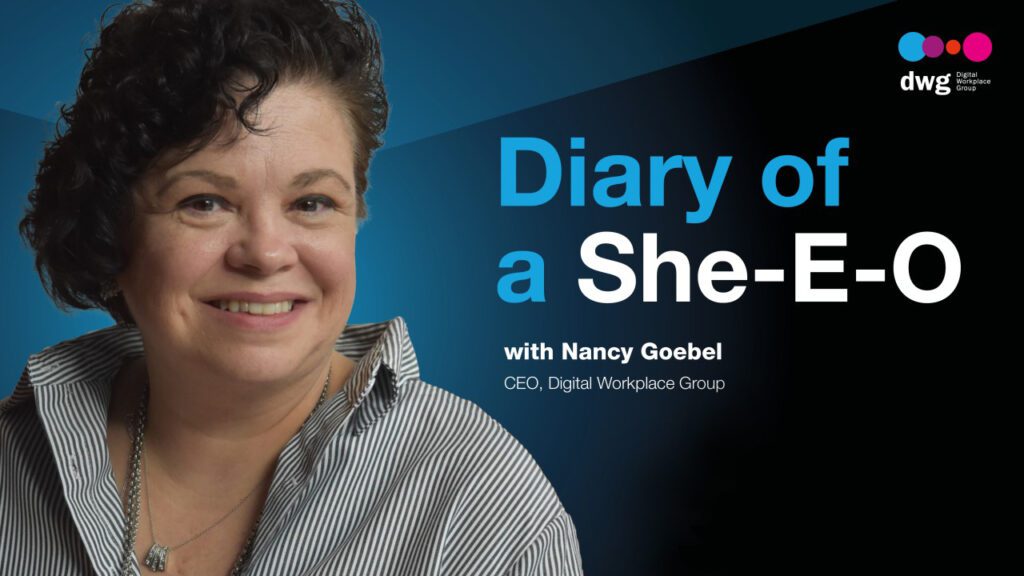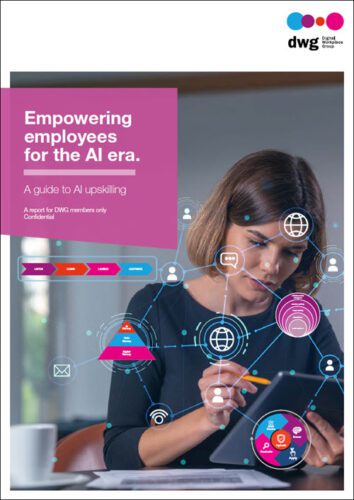Harnessing AI and self-reflection for continuous leadership development

Dear Diary,
Today’s ponderable: Have you used generative AI to reflect on a body of work that you created?
The back story
Well, in the spirit of challenging myself I recently did just that.
Off the back of a recent conversation with long-time friend, mentee and DWG member alum, Christy Punch, I popped my 2025 predictions for the digital workplace into Google notebook and produced my very first AI-generated podcast.
I was actually impressed with the output – both in terms of its reflective content and its conversational tone. I decided to share it in its entirety as the next edition of Digital Workplace Impact podcast. The original blog post used to produce this podcast is featured on the DWG expert blog on digitalworkplacegroup.com.
I look forward to your thoughts and reactions to the first AI-generated edition of Digital Workplace Impact when the episode drops next week!
The second ponderable: How do we, as leaders, continually challenge ourselves to grow and inspire others?
Leveraging generative AI as a powerful prompt
Taking a page from the anecdote above, I plan to continue leveraging generative AI to reflect on my work as one form of ‘external perspective’. I kicked the proverbial tyres with Google NotebookLM to generate a reflective AI-driven podcast, but I will also test this out on my go-to AI apps, including perplexity.ai and pi.ai for general queries, and Microsoft Copilot for anything that is business confidential.
Engaging with external perspectives
Engaging with DWG members, mentors/mentees, peers, experts and practitioners from DWG’s wider circles continues to be another effective way for me to challenge myself. Conversations with trusted advisors provide new perspectives and valuable feedback. For instance, my recent conversation with Christy Punch inspired me to explore a new way of working.
Tapping the power of self-reflection
Self-reflection has been a powerful tool for my personal and professional growth. By taking the time to reflect on past experiences, I can identify areas for improvement and set new goals. Using AI tools to analyse complex information and generate insightful responses has greatly enhanced this process, allowing me to gain a deeper understanding of my strengths and weaknesses, ultimately leading to more informed decision-making.
Setting ambitious goals
Setting ambitious goals is a hallmark of challenging oneself (and others). I was introduced to SMART goals during my Wall Street days as a way of aiming high while ensuring that my personal and professional goals are Specific, Measurable, Achievable, Relevant and Time-bound. Pursuing challenging goals pushes my limits and work with velocity (speed with direction).
Embracing failure as a learning opportunity
Failure is an inevitable part of any challenging endeavour. However, viewing failure as a learning opportunity allows me to turn setbacks into valuable lessons. Embracing failure with a growth mindset enables me to analyse what went wrong, make necessary adjustments, and try again with renewed vigour. This resilience is crucial for long-term success and continual improvement.
Striving to be ever curious and open-minded
Curiosity and open-mindedness are essential traits for those who want to challenge themselves. Staying curious about new trends, technologies and ideas leads to innovative solutions and better decision-making. I cultivate a habit of continuous learning by reading, attending conferences and engaging in professional development activities. An open-minded approach enables me to adapt to changing circumstances and seize new opportunities.
Encouraging a circle of challenge
A circle of challenge is nurtured by trading stories, encouraging experimentation, celebrating successes and learning from failures.
As part of my CEO journey (nearly two years in the making), I launched this diary not only as a safe space to reflect, share and inspire, but even more importantly as a way to connect with, learn from and co-create a groundswell for pushing our collective boundaries and striving for excellence within our wider circle.
How will you build on this circle of challenge?
Categorised in: → Diary of a She-E-O, Artificial intelligence and automation, Business leadership
